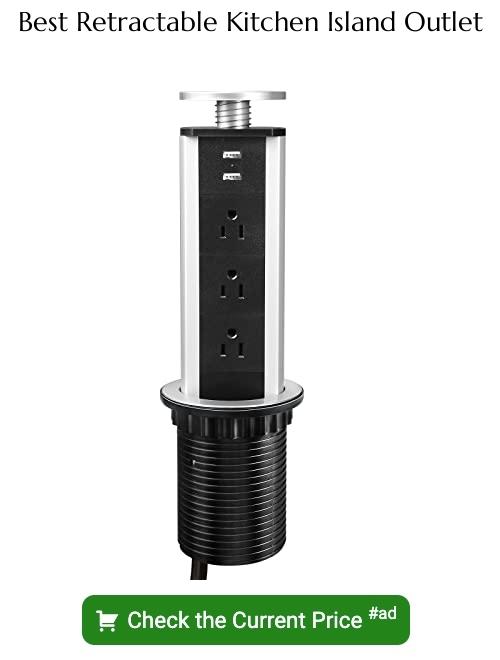Last updated on
Discover the essential reasons behind incorporating an outlet in your kitchen island for enhanced convenience and functionality.
As home design trends continue to evolve, kitchen islands have become an increasingly popular feature in modern homes. Not only do they provide extra counter space and storage, but they also serve as a hub for entertaining guests and preparing meals.
However, one aspect of kitchen island design that often goes overlooked is the need for electrical outlets. While it may seem like a small detail, having an outlet installed on your kitchen island can make a big difference in terms of functionality and convenience.
In this article, we’ll explore why having an outlet on your kitchen island is so important and what you should consider when planning your own island design.
Key takeaways:
- Convenience and flexibility for workspace options
- Charging station for electronic devices
- Electrical safety codes and regulations
- Types and styles of outlets for kitchen islands
- Outlet placement and planning
What's Inside
Importance of Kitchen Island Outlets
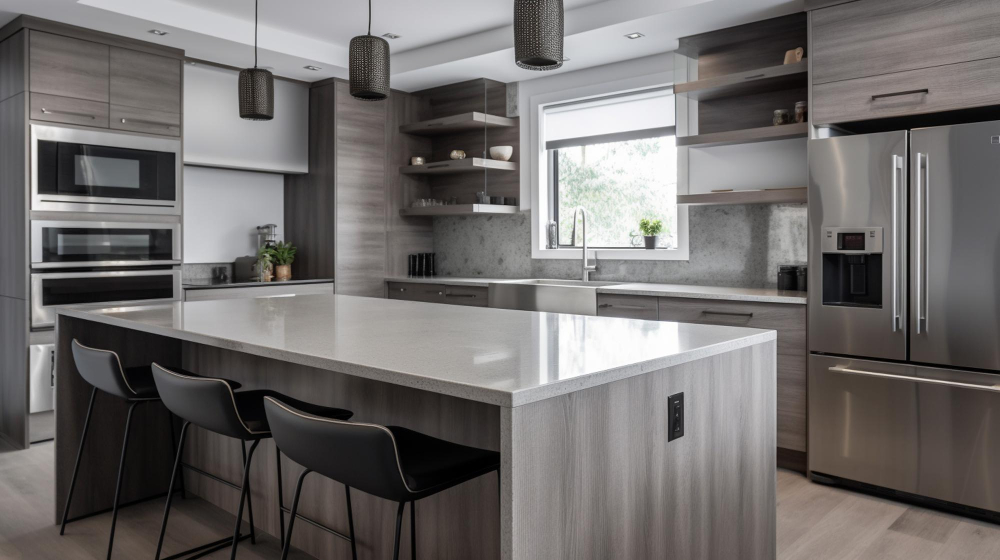
With the increasing number of appliances and gadgets that we use in our kitchens, it’s essential to have a convenient power source nearby. Whether you’re using your blender to make smoothies or charging your phone while cooking dinner, having an outlet within reach can save time and hassle.
Moreover, outlets on kitchen islands provide flexibility for workspace options. You can move around freely without worrying about cords getting tangled or tripping over them.
This is especially important if you have a small kitchen where counter space is limited.
In addition to convenience and flexibility, outlets on kitchen islands also serve as charging stations for electronic devices such as phones and tablets. This feature makes it easy to keep all of your devices charged while working in the kitchen.
Electrical Safety Codes and Regulations
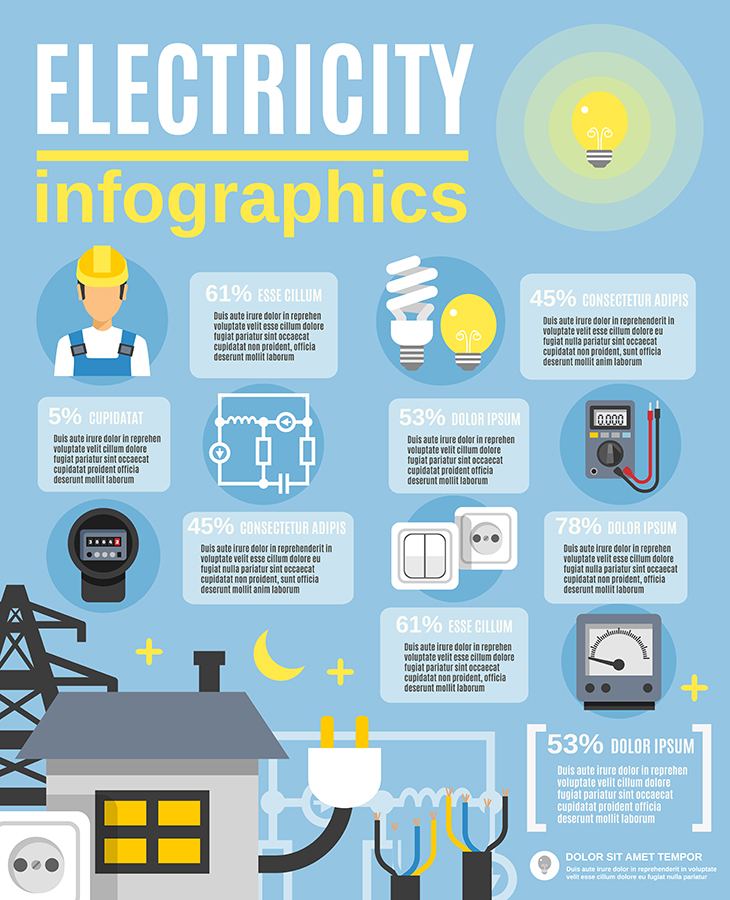
This is especially true when installing outlets on your kitchen island. Electrical codes and regulations are put in place to ensure that all wiring and installations meet certain safety standards.
These codes vary depending on where you live, so it’s important to research the specific requirements for your area before beginning any electrical work.
In general, there are several key factors that must be considered when installing outlets on a kitchen island. For example, all wiring must be properly grounded and protected from damage or wear over time.
There may be restrictions regarding how many outlets can be installed per circuit or how close they can be placed together.
By following these guidelines and working with a licensed electrician if necessary, you can ensure that your kitchen island outlet installation is safe and up-to-code.
Electrical Code Requirements for Kitchen Islands
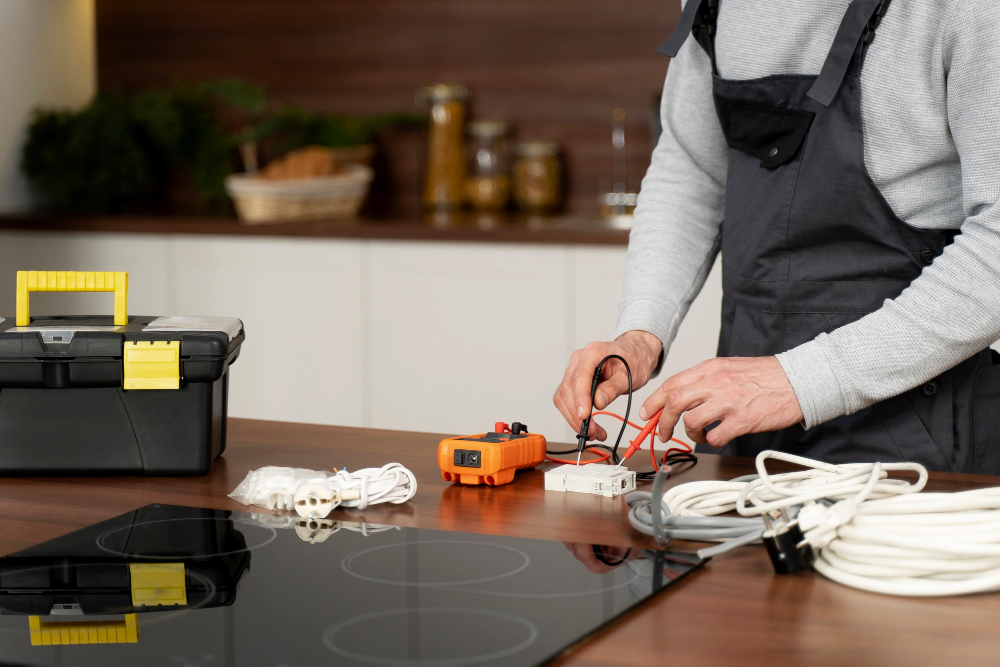
These codes ensure the safety of you and your family while using these outlets in a high-traffic area like the kitchen.
According to the National Electrical Code (NEC), any countertop surface wider than 12 inches requires an outlet every four feet along its length. This means that if your kitchen island is longer than four feet, you will need at least two outlets installed on it.
All electrical work must be performed by a licensed electrician who is familiar with local building codes and regulations. They will ensure that all wiring is properly grounded and protected from moisture or other potential hazards.
Safe Installation of Kitchen Island Outlets
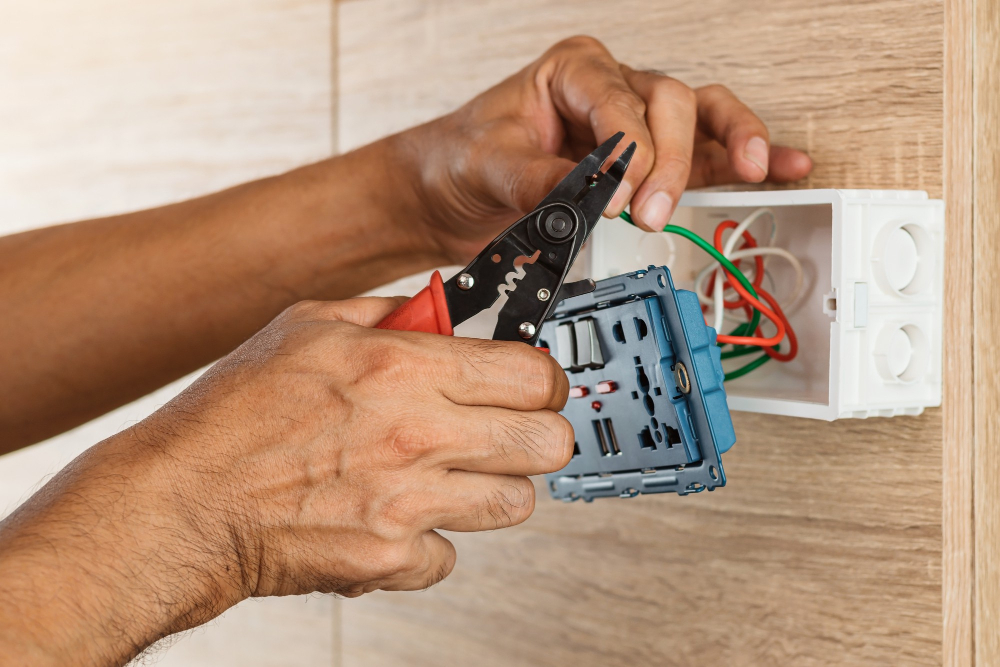
Improper installation can lead to serious hazards such as electrocution or fire. To ensure that your kitchen island outlet is installed safely and correctly, it’s important to hire a licensed electrician who has experience with this type of installation.
The electrician will need to follow specific guidelines and regulations set forth by the National Electrical Code (NEC) for safe installation practices. These guidelines include ensuring that the outlet is properly grounded, using appropriate wiring materials and techniques, and placing the outlet at a safe distance from any water sources.
It’s also important to consider how you plan on using your kitchen island outlets when determining their placement. For example, if you plan on using them primarily for charging devices or powering small appliances like blenders or mixers, they may not need to be placed in areas where they could come into contact with liquids.
Outlet Types and Styles
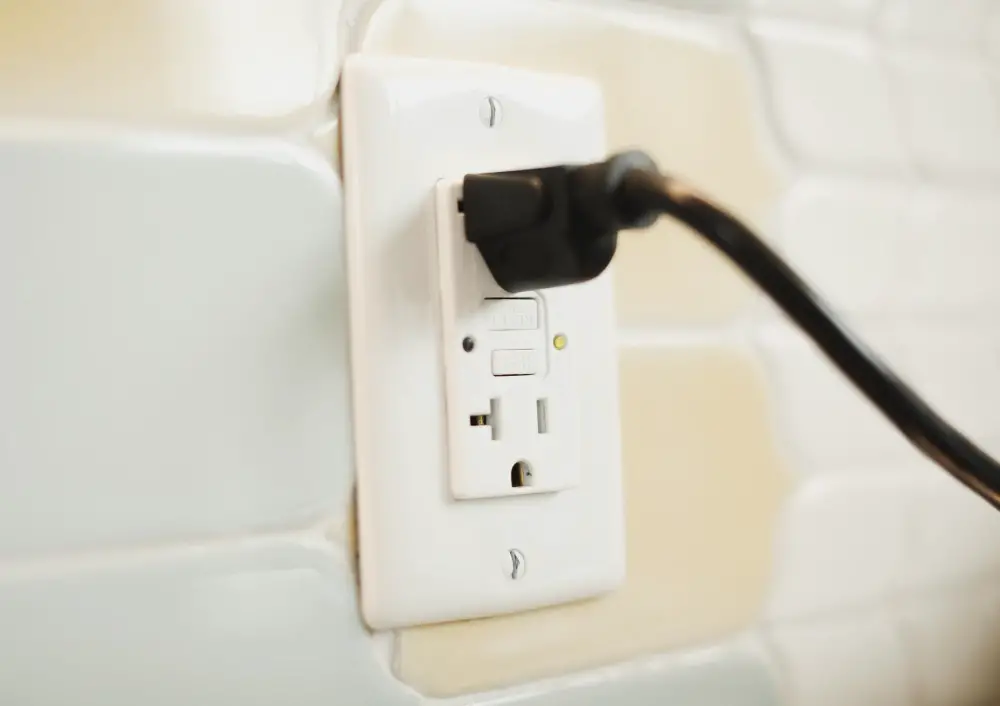
The most common type of outlet is a standard duplex receptacle, which features two outlets in one unit. However, you may also want to consider GFCI (ground fault circuit interrupter) outlets or USB charging ports for added convenience.
In terms of style, traditional outlets can be bulky and unsightly on a sleek kitchen island design. To maintain an aesthetically pleasing look while still providing functionality, you may want to opt for hidden or pop-up outlets that can be concealed when not in use.
Another option is decorative electrical plates that match your backsplash or countertop material. These plates come in various finishes such as stainless steel and brushed nickel that blend seamlessly with modern appliances.
Types of Outlets for Kitchen Islands
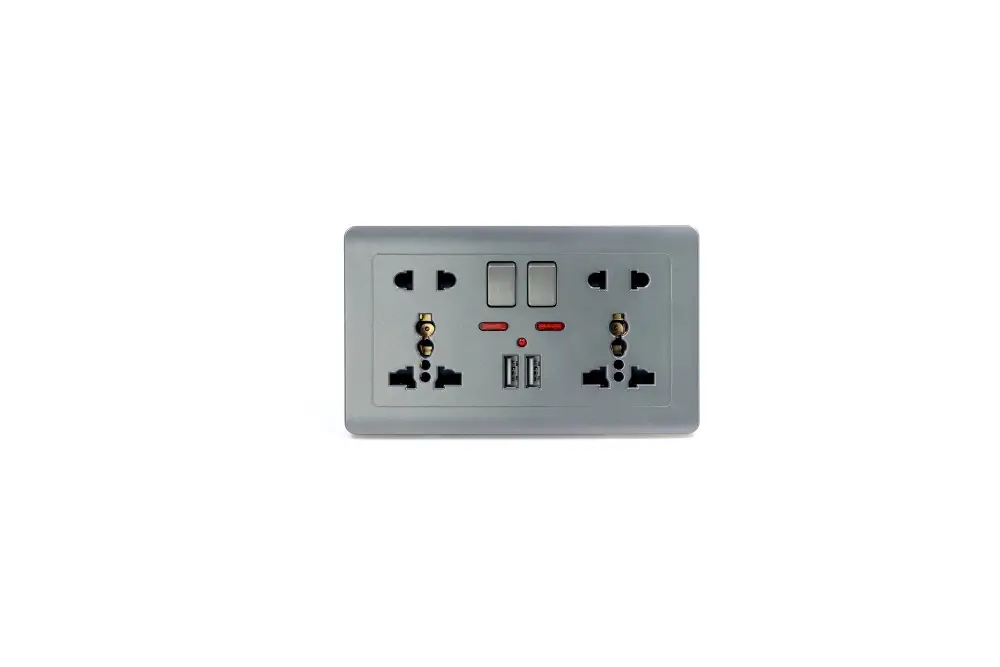
One popular choice is the standard electrical outlet, which can be installed directly into the surface of your island or mounted on its side. These outlets are versatile and can accommodate a wide range of appliances and devices.
Another option is USB outlets, which allow you to charge smartphones, tablets, and other electronic devices without needing an adapter. This type of outlet is especially useful if you plan on using your kitchen island as a workspace or charging station.
For those who prefer a more streamlined look in their kitchen design, pop-up outlets may be worth considering. These hidden outlets sit flush with the surface of your countertop when not in use but can easily be raised up when needed.
Ultimately, the type of outlet that’s best for you will depend on how you plan to use your kitchen island and what aesthetic considerations matter most to you.
Aesthetically Pleasing Outlet Designs
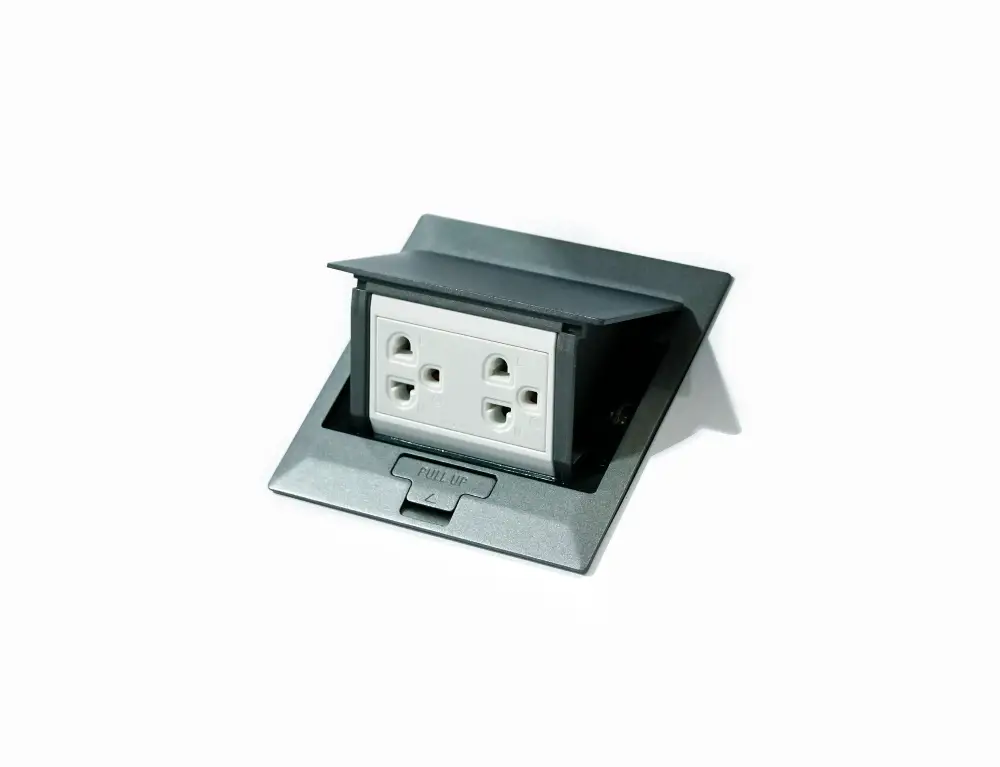
After all, you don’t want an unsightly electrical outlet detracting from your beautiful kitchen design. Fortunately, there are many options available that can help blend your outlets seamlessly into your island design.
One popular option for aesthetically pleasing outlets is to install them underneath the overhang of the countertop or on one side of the island where they’re less visible. This placement not only keeps them out of sight but also makes them more accessible for plugging in appliances and charging devices.
Another option is to use pop-up or hidden outlets that remain concealed until needed. These types of outlets can be installed flush with the surface and then raised when required using a simple push button mechanism.
Some homeowners choose decorative covers for their electrical boxes as another way to make their kitchen islands look more attractive while still providing easy access to power sources.
Hidden and Pop-up Outlets for Kitchen Islands
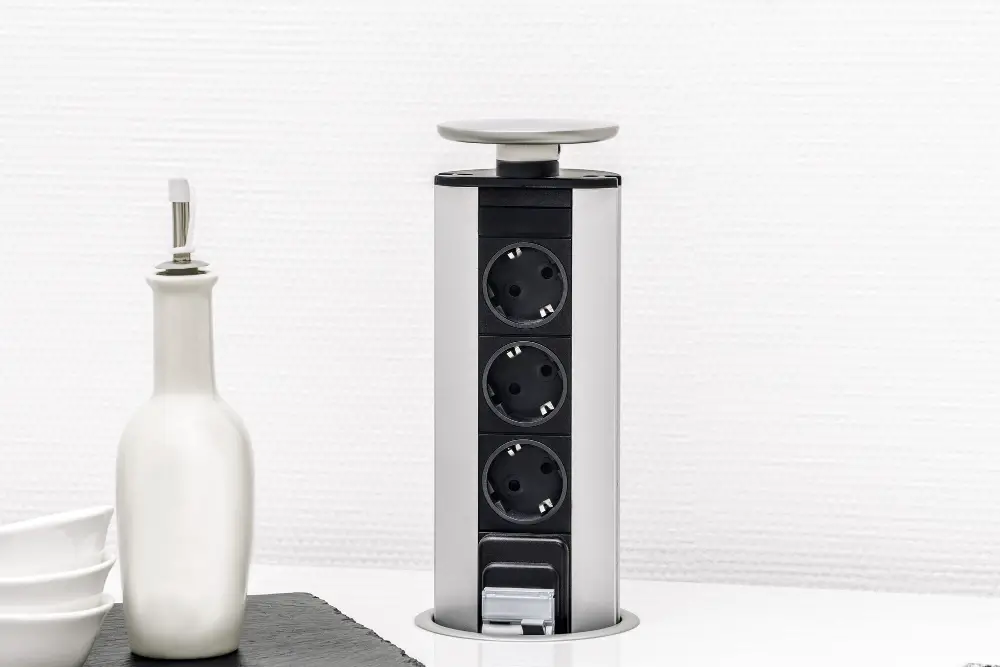
This is where hidden and pop-up outlets come in handy. These types of outlets are designed to blend seamlessly into your kitchen island’s surface when not in use, providing an aesthetically pleasing solution for those who want their outlet placement to be discreet.
Hidden or concealed electrical sockets can be installed on the side or underside of the countertop, while pop-up models rise from within the counter with just a simple push or touch. They can also include USB ports for charging mobile devices.
While these options may cost more than traditional wall-mounted receptacles due to their specialized design and installation requirements, they offer several benefits beyond aesthetics alone. Hidden and pop-up outlets provide added safety by keeping cords out of sight (and out of reach), making them ideal for households with young children or pets.
Electrical Outlet Placement

First and foremost, the outlets need to be easily accessible without interfering with the functionality of your island. You don’t want cords getting in the way while you’re cooking or entertaining guests.
Another important factor is safety. Outlets should be placed away from water sources such as sinks or faucets to avoid any potential hazards.
They should not be installed too close together as this can cause overloading and increase fire risks.
It’s also essential that you plan ahead for all of your appliance needs when deciding where to place outlets on your kitchen island. Consider which appliances will require power access and ensure that there are enough outlets available in convenient locations for each one.
Planning the Placement of Outlets On Your Kitchen Island
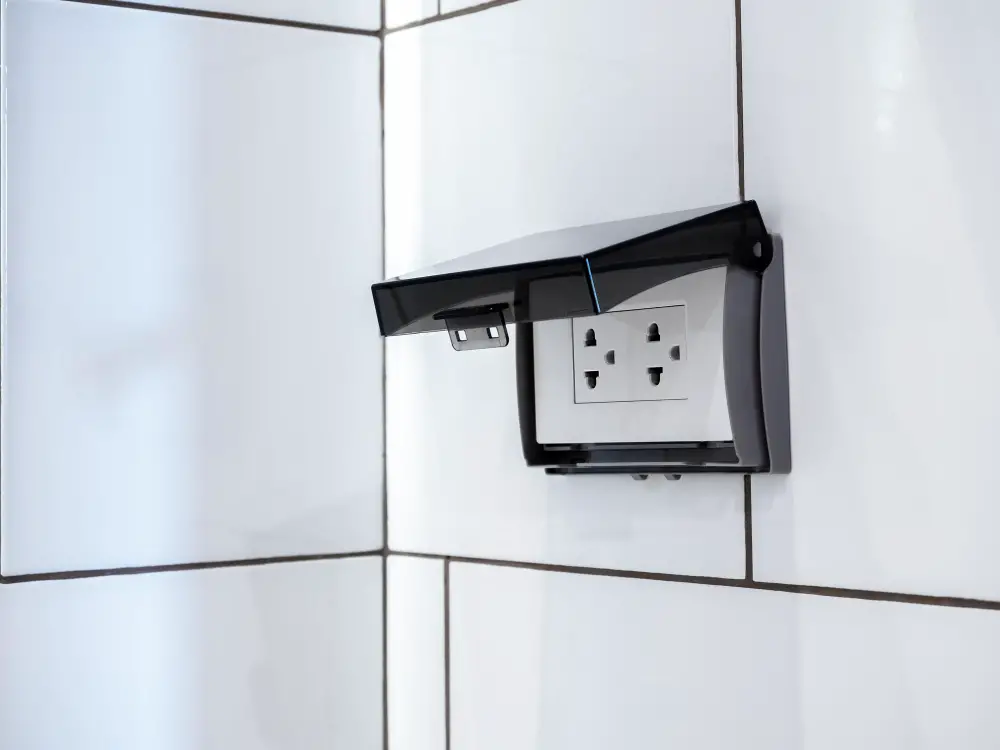
First and foremost, you’ll want to think about how you plan to use your island. Will it primarily be used for food prep and cooking? Or will it serve as a space for entertaining guests? Depending on your needs, you may want to position outlets in different locations.
For example, if you plan on using small appliances like blenders or mixers frequently while standing at the island counter, placing an outlet near that area would be ideal. On the other hand, if you envision using your kitchen island more as a bar or serving station during parties and gatherings with friends and family members then having an outlet installed closer towards one end of the countertop might make more sense.
Another important consideration is safety regulations when installing electrical outlets in kitchens. Electrical codes require that all kitchen islands have at least one GFCI (ground fault circuit interrupter) protected receptacle installed within 2 feet from any sink basin edge so that water splashes do not cause electrocution hazards.
Convenience for Appliances
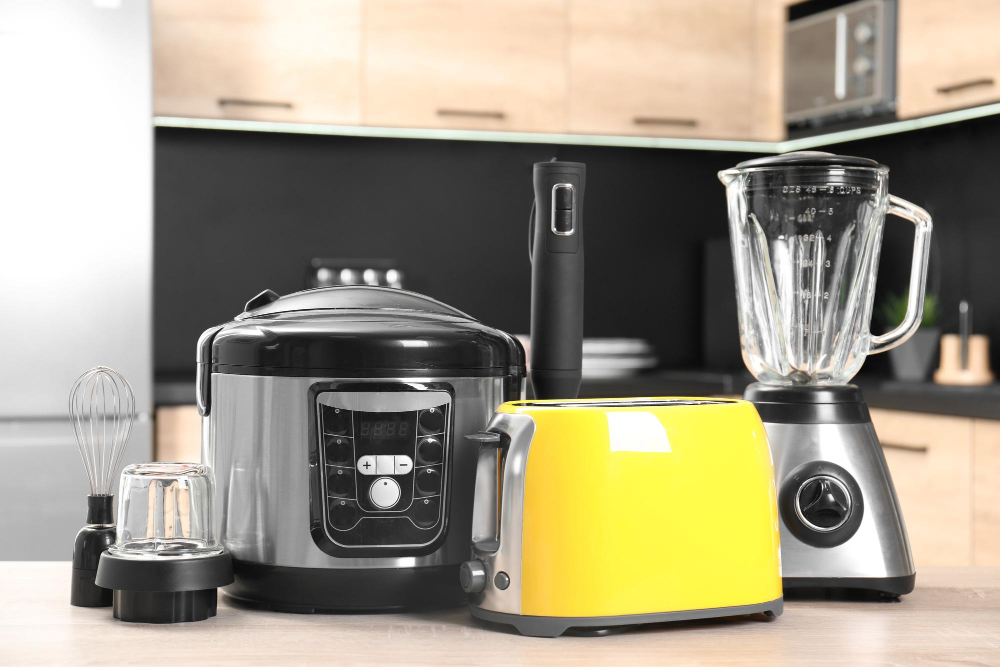
Many modern kitchens feature a variety of small appliances, such as blenders, mixers, and food processors that require electrical power to operate. By having an outlet installed on your kitchen island, you can easily plug in these devices without needing to move them around or stretch cords across the room.
This added convenience also extends to larger appliances like electric griddles or hot plates that are often used for cooking breakfast foods or entertaining guests. With a nearby outlet on your kitchen island, you can quickly set up these devices and start cooking without worrying about finding a suitable location near other outlets.
Flexible Workspace Options
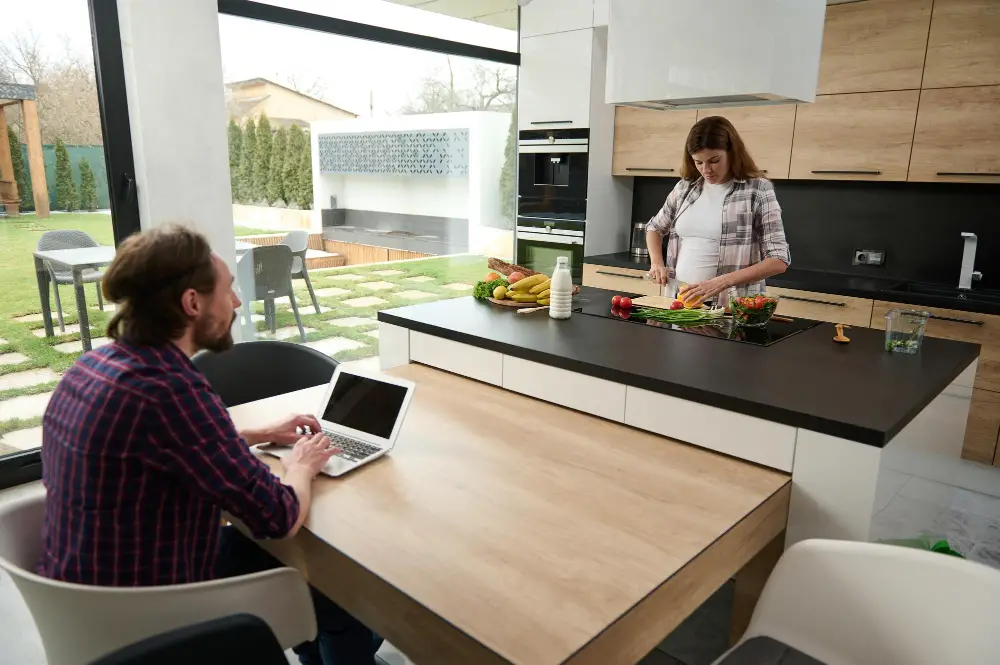
With the ability to plug in appliances and gadgets, you can easily transform your island into a functional workstation that meets all of your cooking needs. Whether you’re preparing food or mixing drinks, having access to power outlets means that you can use any appliance without worrying about running out of battery life.
In addition to providing power for appliances, outlets on the kitchen island also allow for more flexibility when it comes to arranging and using countertop space. For example, if you have limited counter space elsewhere in the kitchen but need room for meal prep or entertaining guests, having an outlet on the island allows you to move equipment around as needed without being tethered by cords.
Incorporating electrical outlets into your kitchen island design is essential if you want maximum functionality from this popular feature.
Charging Stations
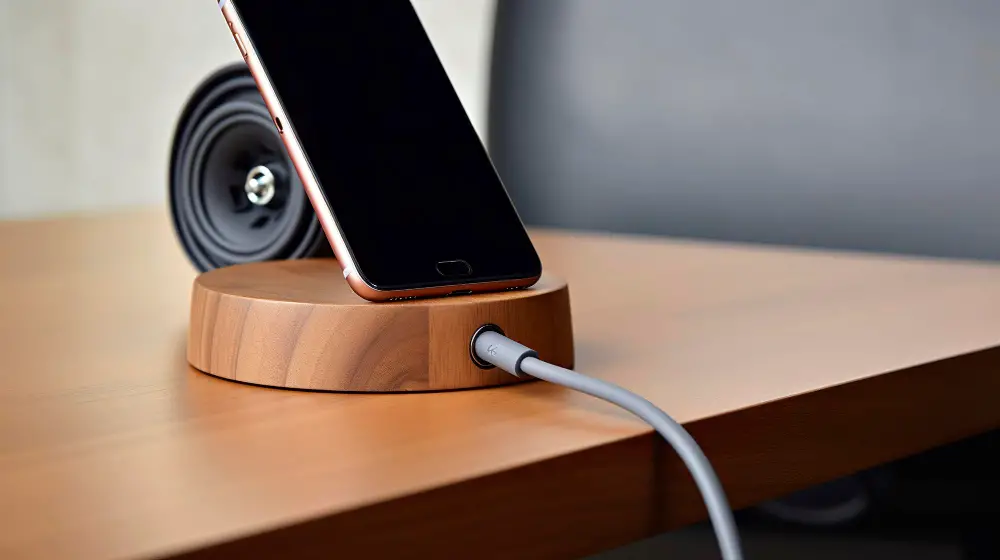
From smartphones and tablets to laptops and smartwatches, keeping all of these gadgets charged can be a challenge. This is where having an outlet on your kitchen island can come in handy as it provides a convenient location for creating a charging station.
By installing outlets with USB ports or adding power strips to your kitchen island, you can create the perfect spot for charging all of your devices while still being able to use them at the same time. This is especially useful when cooking or entertaining guests as you won’t have to worry about running out of battery life on any important device.
Having designated spots for chargers will help keep cords organized and prevent clutter from accumulating around other areas in the home.
Cooking and Entertainment Purposes
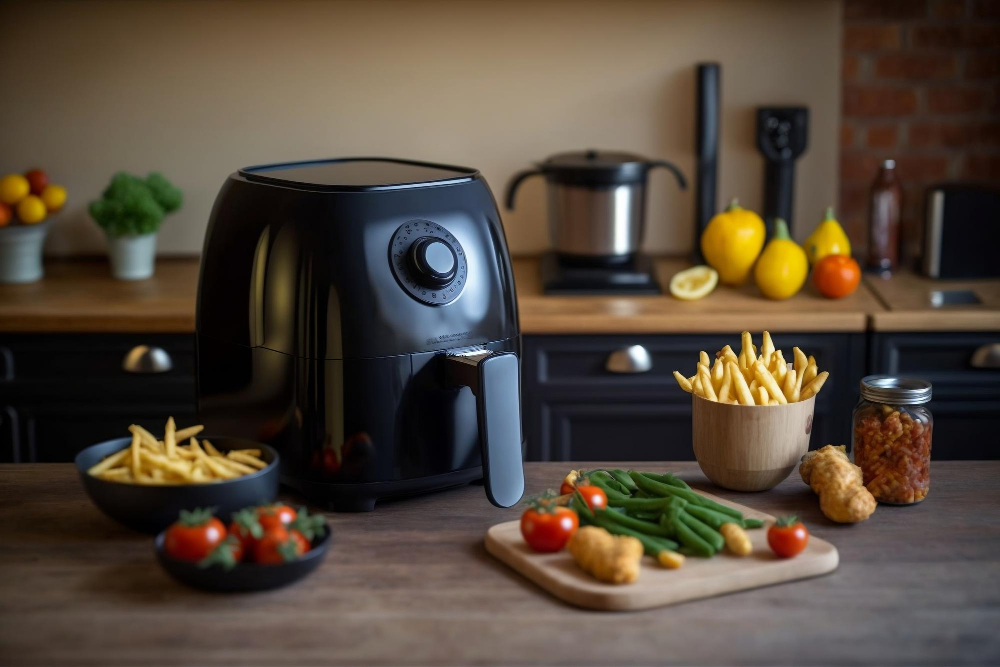
If you enjoy hosting dinner parties or family gatherings, having a power source nearby can make it easier to prepare food while socializing with guests. You could use the outlet to plug in small appliances like blenders, mixers, or even a portable cooktop if you need extra cooking space.
Many modern kitchens are equipped with smart home technology that allows homeowners to control various aspects of their homes from their smartphones or tablets. With an outlet on your kitchen island, you could easily charge these devices while using them as part of your entertainment setup.
Incorporating outlets into your kitchen island design is a practical way to enhance the functionality and convenience of this important feature in any modern home.
Kitchen Gadget Integration
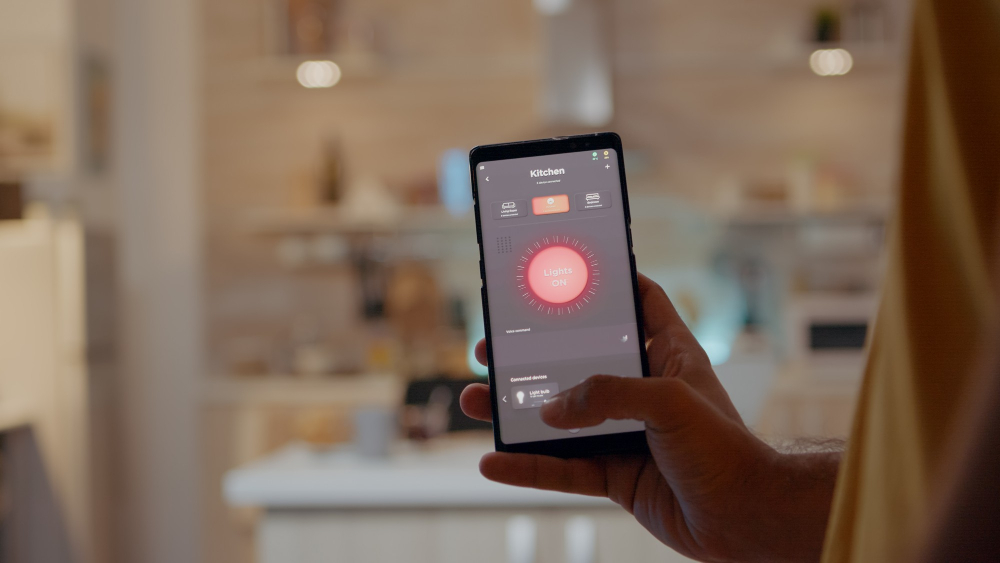
With the rise of smart home technology, many homeowners are looking for ways to integrate their gadgets into their daily routines. From voice-activated assistants to Bluetooth-enabled appliances, there are countless devices that can make cooking and entertaining easier and more enjoyable.
By installing outlets on your kitchen island, you can easily incorporate these gadgets into your space without worrying about cords or wires cluttering up your countertops. For example, you could use a tablet holder with built-in charging capabilities to keep recipes at eye level while you cook or install a wireless speaker system for music streaming during dinner parties.
If you have any small appliances that require electricity such as blenders or mixers; having an outlet nearby will allow them to be used directly from the countertop instead of being moved around constantly which saves time and effort in food preparation.
Advantages of Having Outlets On a Kitchen Island
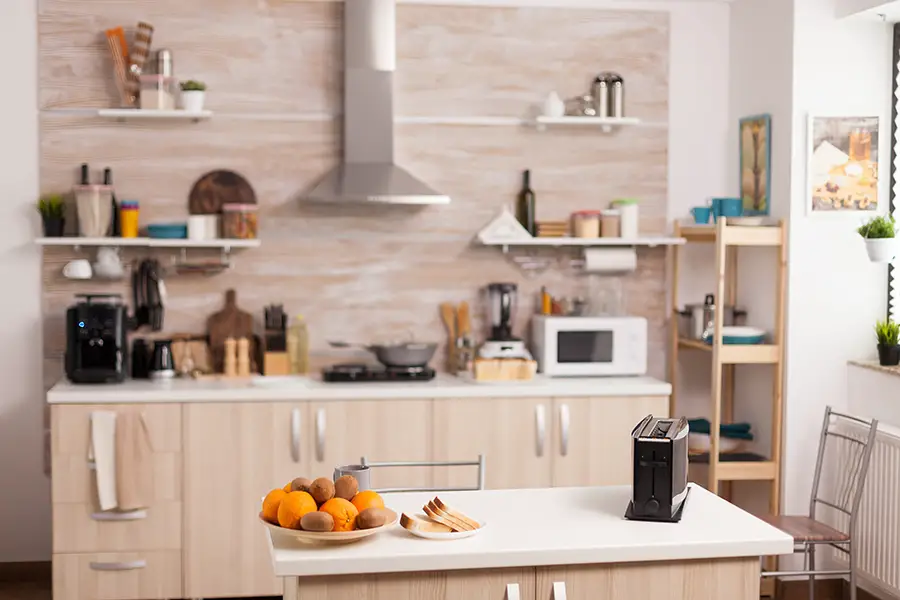
For one, it allows for more flexible workspace options, making it easier to use small appliances like blenders or mixers without having to move them around the kitchen. Outlets on a kitchen island make charging electronic devices much more convenient and accessible while cooking or entertaining guests.
Another advantage of having outlets installed in your kitchen island is the ability to integrate various gadgets into your cooking routine seamlessly. With smart home technology becoming increasingly popular, many homeowners are looking for ways to incorporate these features into their kitchens as well.
By installing electrical outlets in strategic locations throughout the space – including on a central island – you can easily add new gadgets and appliances as needed without worrying about running out of power.
Adding an outlet (or multiple) onto your kitchen island can increase its overall functionality and value when it comes time to sell your home. Many potential buyers will appreciate this feature since they know how useful it is when preparing meals or hosting gatherings with friends and family.
Home Resale Value Increase

Potential buyers are often looking for modern and functional features in a home, and having a well-designed kitchen with convenient outlets is sure to impress them. In fact, according to the National Association of Home Builders (NAHB), 70% of new homes built in 2018 had a kitchen island included as part of their design.
By incorporating electrical outlets into your kitchen island design, you’re not only making it more practical for everyday use but also adding value to your property. This feature will make it easier for potential buyers to envision themselves using the space efficiently while cooking or entertaining guests.
Installing an outlet on your kitchen island is essential if you want maximum functionality from this popular feature in modern kitchens. Not only does it provide convenience when preparing meals or hosting gatherings but also adds significant value when selling the house later down the line.
Best Practices for Kitchen Island Outlet Installation

First and foremost, safety is key. Make sure that any electrical work is done by a licensed professional who can ensure that all wiring meets local codes and regulations.
Another important consideration when planning your outlet installation is the placement of the outlets themselves. You’ll want to think about how you plan to use your kitchen island – will it primarily be used for cooking or entertaining? Do you need outlets for charging devices or powering appliances? By considering these factors, you can determine where on the island would be most convenient for outlet placement.
It’s also worth noting that there are many different types of outlets available today beyond traditional wall sockets. Pop-up and hidden options allow for seamless integration into your design while still providing easy access when needed.
FAQ
Do you need outlets in an island?
Yes, at least one receptacle outlet is required in all islands and peninsulas according to the 2020 NEC, with more required depending on the countertop or work surface square footage.
Where does the outlet need to be on a kitchen island?
The outlet on a kitchen island needs to be within 24 inches from the center line of the island if installed above the surface, or within 12 inches of center if installed below, and never face up on a countertop with a sink.
Do I need GFCI outlets on a kitchen island?
Yes, GFCI outlets are needed on a kitchen island as they serve countertop surfaces.
How much does it cost to add an outlet to a kitchen island?
The cost to add an outlet to a kitchen island typically ranges between $100 to $500 per outlet, with a more specific estimate of $125 to $175 for standard outlets, depending on the complexity of the job.
What are the electrical code requirements for outlets on a kitchen island?
The electrical code requires at least one GFCI-protected receptacle on a kitchen island.
How many outlets should be installed on a kitchen island for optimal functionality?
At least two outlets should be installed on a kitchen island for optimal functionality.
Can a pop-up electrical outlet be used for a kitchen island, and what are its benefits?
Yes, a pop-up electrical outlet can be used for a kitchen island, providing convenient and accessible power supply while maintaining a clutter-free and aesthetically pleasing surface.
